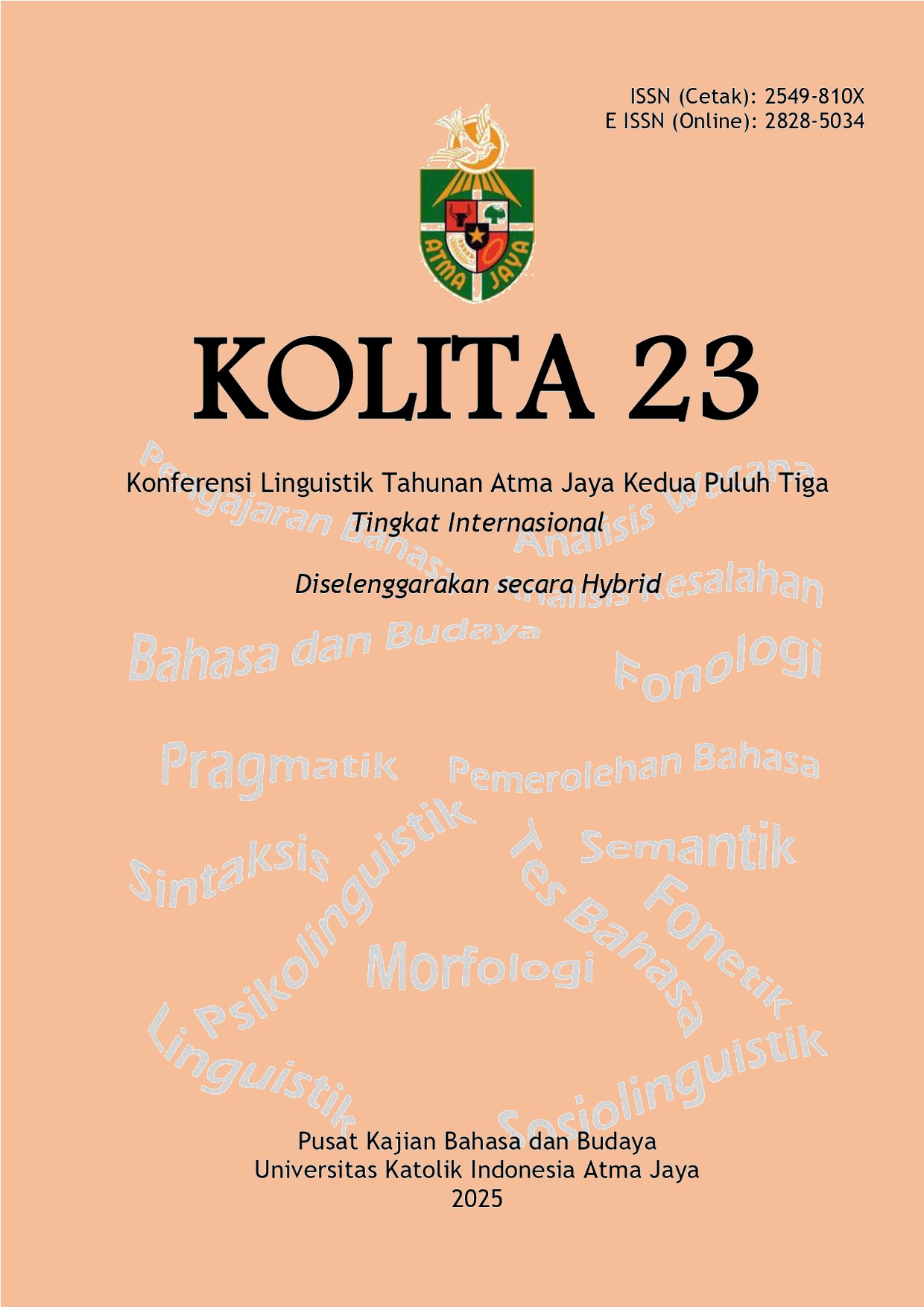SELF-PRAISE AS A STRATEGY OF SELF-PRESENTATION: A SOCIOPRAGMATICS STUDY OF INDONESIAN LINKEDIN USERS
DOI:
https://doi.org/10.25170/kolita.v23i23.7167Keywords:
speech act, self-praise, Indonesian LinkedIn usersAbstract
Reflecting on the current young-adult movement, #KaburAjaDulu, Indonesian LinkedIn users have been intensely growing their presence online. They talk about works and achievements to reach wider audiences, striving to get more opportunities in the workplace. This attempt is realized through various LinkedIn written posts containing self-praise. Self-praise, as a speech act, is often regarded as a face-threatening strategy. This study reinforces findings from previous research by demonstrating how such expressions can serve a functional and beneficial role in specific social media contexts, particularly on platforms like LinkedIn. Although previous studies have examined this phenomenon across different contexts and among speakers from diverse backgrounds, there remains a lack of comprehensive research specifically focusing on Indonesian LinkedIn users. Thus, this study aims to examine the speech act strategy associated with self-praise which is identified as self-presentation within the Indonesian LinkedIn users. To achieve this, we collected achievement-related posts from users across various professional backgrounds, covering the period from January 2024 to February 2025. The term is chosen since it captures the immediate effect of #KaburAjaDulu. Drawing from Hiwa Weisi and Sedigheh Hajizadeh's (2025) framework analysis of self-presentation and self-praise tactics, the findings show that Indonesian LinkedIn users express self-praise using three approaches, highlighting responsibility and credit, reporting external events as a testament, and explicitly using positive lexis. On the contrary, the least used strategy of self-praise is the one using adverbial praise. The result reinforces Indonesian people’s tendency to use indirect speech rather than direct speech to communicate self-praise. It represents how cultural views of subtlety and harmony are still deeply embedded in the work community. What sets this study apart is its identification of a tendency to use gratitude expressions as a reflection of politeness strategies. Additionally, personal storytelling emerges as a technique for self-branding and strengthening users’ professional image in the job market. These self-praise approaches are still heavily regarded as high-context communication, which often corresponds to Eastern culture. However, the work community views self-praise positively without any means to threaten maxims of modesty. The findings of this study can provide a foundation for more in-depth investigations into self-praise strategies within the broader context of the Indonesian community.






